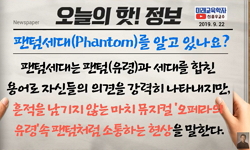Purpose: Acoustic streaming induced by applying transcranial focused ultrasound (FUS) promotes localized advective solute transport in the brain and has recently garnered research interest for drug delivery and enhancement of brain waste clearance. Th...
http://chineseinput.net/에서 pinyin(병음)방식으로 중국어를 변환할 수 있습니다.
변환된 중국어를 복사하여 사용하시면 됩니다.
- 中文 을 입력하시려면 zhongwen을 입력하시고 space를누르시면됩니다.
- 北京 을 입력하시려면 beijing을 입력하시고 space를 누르시면 됩니다.

Evaluation of advective solute infiltration into porous media by pulsed focused ultrasound-induced acoustic streaming effects
한글로보기https://www.riss.kr/link?id=A108905869
-
저자
Jared Van Reet (Department of Radiology, Brigham and Women’s Hospital, Harvard Medical School) ; Kate Tunnell (Department of Radiology, Brigham and Women’s Hospital, Harvard Medical School) ; Kara Anderson (Department of Radiology, Brigham and Women’s Hospital, Harvard Medical School) ; Hyun-Chul Kim (Department of Radiology, Brigham and Women’s Hospital, Harvard Medical School, Boston) ; Evgenii Kim (Department of Radiology, Brigham and Women’s Hospital, Harvard Medical School) ; Kavin Kowsari (Department of Radiology, Brigham and Women’s Hospital, Harvard Medical School, Boston) ; Yoo Seung-Schik (Department of Radiology, Brigham and Women's Hospital, Harvard Medical School, Boston, MA, USA.)
- 발행기관
- 학술지명
- 권호사항
-
발행연도
2024
-
작성언어
English
- 주제어
-
등재정보
KCI등재
-
자료형태
학술저널
- 발행기관 URL
-
수록면
35-46(12쪽)
- DOI식별코드
- 제공처
-
0
상세조회 -
0
다운로드
부가정보
다국어 초록 (Multilingual Abstract)
Purpose: Acoustic streaming induced by applying transcranial focused ultrasound (FUS) promotes localized advective solute transport in the brain and has recently garnered research interest for drug delivery and enhancement of brain waste clearance. The acoustic streaming behavior in brain tissue is difficult to model numerically and thus warrants an in vitro examination of the effects of using different sonication parameters, in terms of frequency, intensity, and pulse duration (PD).
Methods: Melamine and polyvinyl alcohol (PVA) foams were used to mimic the porous brain tissue, which contains leptomeningeal fenestrations and perivascular space, while agar hydrogel was used to emulate denser neuropil. FUS was delivered to these media, which were immersed in a phosphate-buffered saline containing toluidine blue O dye, across various frequencies (400, 500, and 600 kHz; applicable to transcranial delivery) in a pulsed mode at two different spatial- peak pulse-average intensities (3 and 4 W/cm2).
Results: Image analysis showed that the use of 400 kHz yielded the greatest dye infiltration in melamine foam, while sonication had no impact on infiltration in the agar hydrogel due to the dominance of diffusional transport. Using a fixed spatial-peak temporal-average intensity of 0.4 W/cm2 at 400 kHz, a PD of 75 ms resulted in the greatest infiltration depth in both melamine and PVA foams among the tested range (50-150 ms).
Conclusion: These findings suggest the existence of a specific frequency and PD that induce greater enhancement of solute/fluid movement, which may contribute to eventual in vivo applications in promoting waste clearance from the brain.
다국어 초록 (Multilingual Abstract)
Purpose: Acoustic streaming induced by applying transcranial focused ultrasound (FUS) promotes localized advective solute transport in the brain and has recently garnered research interest for drug delivery and enhancement of brain waste clearance. Th...
Purpose: Acoustic streaming induced by applying transcranial focused ultrasound (FUS) promotes localized advective solute transport in the brain and has recently garnered research interest for drug delivery and enhancement of brain waste clearance. The acoustic streaming behavior in brain tissue is difficult to model numerically and thus warrants an <i>in vitro</i> examination of the effects of using different sonication parameters, in terms of frequency, intensity, and pulse duration (PD).Methods: Melamine and polyvinyl alcohol (PVA) foams were used to mimic the porous brain tissue, which contains leptomeningeal fenestrations and perivascular space, while agar hydrogel was used to emulate denser neuropil. FUS was delivered to these media, which were immersed in a phosphate-buffered saline containing toluidine blue O dye, across various frequencies (400, 500, and 600 kHz; applicable to transcranial delivery) in a pulsed mode at two different spatialpeak pulse-average intensities (3 and 4 W/cm<sup>2</sup>).Results: Image analysis showed that the use of 400 kHz yielded the greatest dye infiltration in melamine foam, while sonication had no impact on infiltration in the agar hydrogel due to the dominance of diffusional transport. Using a fixed spatial-peak temporal-average intensity of 0.4 W/cm2 at 400 kHz, a PD of 75 ms resulted in the greatest infiltration depth in both melamine and PVA foams among the tested range (50-150 ms).Conclusion: These findings suggest the existence of a specific frequency and PD that induce greater enhancement of solute/fluid movement, which may contribute to eventual in vivo applications in promoting waste clearance from the brain.
동일학술지(권/호) 다른 논문
-
- 대한초음파의학회
- Ahn Dongbin
- 2024
- KCI등재
-
Artificial intelligence in breast ultrasound: application in clinical practice
- 대한초음파의학회
- Hila Fruchtman Brot
- 2024
- KCI등재
-
- 대한초음파의학회
- Serena Xodo
- 2024
- KCI등재
-
- 대한초음파의학회
- Xiao-Long Li
- 2024
- KCI등재




 KCI
KCI


